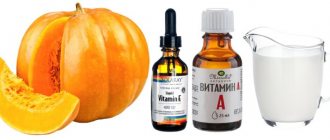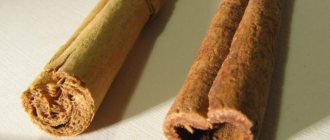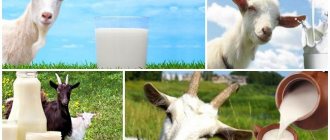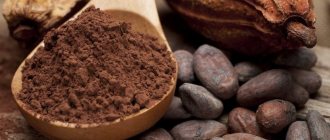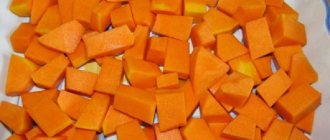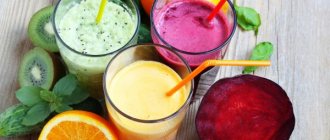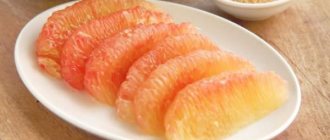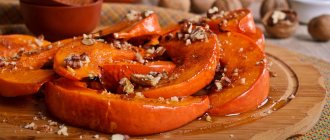Botanical description and range of the common pumpkin
The common pumpkin belongs to the Cucurbitaceae family, the genus Pumpkin. In Latin - Cucurbita pepo. It was described, like many other plants, by the famous Swedish botanist Carl Linnaeus. This family is quite large; pumpkin has many edible and well-known relatives: cucumbers, watermelons, melons and many more exotic vegetables and even fruits. Zucchini and squash are varieties of this type of pumpkin.
This plant is annual and herbaceous, has great growth vigor and power. What other vegetable can boast fruits of this size and weight? To feed the huge rough leaves and fruits, an equally powerful root system is required. It consists not only of a strong taproot that goes deep, most often 3 meters or more, into the ground. It has a considerable number of branches, which can be up to 12 m long. Such a mass of roots allows the plant to successfully withstand weather adversity and grow safely in both dry and rainy weather.
The stems, pentagonal in cross-section, spread along the ground. This plant cannot wrap itself around a support, but under favorable conditions it manages to climb quite high, since the stems reach a length of up to 10 m. And branched or simple tendrils help it in this. Clinging to a support, they allow the plant to reach a fairly large height. There are compact varieties of this vegetable that branch slightly and do not take up much space when grown.
The leaves of this garden lady are large, matching the fruits; depending on the variety, they can be lobed or palmately dissected. Varieties with heavily dissected leaves are considered more resistant to lack of moisture. Leaf petioles are long. Like the stems, they have pubescence.
The flowers are large yellow with a fused five-lobed corolla. On the same plant there are both male and female flowers, and the female flowers have short pedicels, and the male ones have long pedicels. The number of male flowers exceeds the number of female flowers by 25 times. Only bush varieties have only slightly fewer female flowers than male ones. The arrangement of their flowers also differs. Female flowers are often located on the lateral shoots, while male flowers are often located on the main stem. The male flowers bloom first, approximately 50 days after germination. Female flowers do this a week later. Pollination is cross, pollinators are bees and bumblebees, pumpkins and ants are pollinated.
The fruit is pumpkin. It is usually covered with a hard crust, which allows the pumpkins to be stored for a long time. The color and size of pumpkins depends on the variety. Inside the pumpkin there are quite large seeds, 1 to 3 cm long, covered with two shells: dense, white on the outside and filmy, greenish-gray inside. There are varieties in which the seeds do not have an outer shell, the so-called gymnosperms.
Pumpkin is a southern plant, so it requires warmth and sun to grow successfully. On poor soils, this plant will grow poorly or not at all. She loves humus-rich, non-acidic soils that warm up quickly.
Wild species of this vegetable are found in the Southern United States, Mexico, Honduras and Guatemala. There is evidence that some of its species were grown in China in ancient times. But the common pumpkin was introduced into culture by the Indians. And this happened five thousand years BC. This is exactly the age of pumpkin seeds found in Mexican caves. This vegetable came to Europe in the 16th century, quickly fell in love and very soon found itself in Russia. The ease of cultivation and long shelf life appealed to the peasants. They began to grow it in almost every peasant farm. Now this vegetable can be found everywhere. By the way, Russia ranks 3rd in the world in its cultivation.
Chemical composition and calorie content of pumpkin
92% of this vegetable is water. But the remaining 8% are distinguished by their rich composition. Namely :
- Sahara;
- starch;
- various vitamins, including carotene; there is less of it in carrots;
- enzymes;
- cellulose;
- many microelements, including such valuable ones as potassium, iron and zinc;
- proteins;
- pectins.
The leaves of this vegetable contain a lot of vitamin C - 620 mg. The seeds are also rich in nutrients:
- tasty and healthy oil with a high content of unsaturated fatty acids;
- amino acids;
- phytosterols;
- carotene and carotenoids;
- essential oil.
This composition allows this vegetable to be not only useful, but also a medicinal product. At the same time, in terms of calorie content, which is only 26 kcal per 100 g of product, it can be considered dietary.
What are the benefits of pumpkin for women?
For women, raw pumpkin, including pumpkin juice, as well as baked pumpkin and its seeds, will be especially useful. Using pumpkin dishes you can lose weight, lower cholesterol and remove heavy metal compounds from the body.
Pumpkin is also useful for the treatment of gynecological diseases. The pulp of a ripe vegetable helps with infertility, cervical erosion, female inflammation, and vaginitis.
Shutterstock
Read also:
Winter holidays in Truskavets: all inclusive!
Pumpkin is also useful for pregnant women - thanks to its high content of calcium, magnesium, and iron, it will help prevent anemia. And during menopause, pumpkin dishes will help reduce the unpleasant symptoms of this period and relieve nervous tension.
Important! A mature and healthy pumpkin should be dense, fleshy, heavy and elastic, without cracks or dents. The type of vegetable is also important. Bright orange fruits are more suitable for making soups. And for porridges and baked goods, it is better to use pink and yellow pumpkins.
Read also:
Unusual jams: surprise your loved ones with a new taste!
Medicinal and beneficial properties of pumpkin
You can prepare a large number of delicious dishes from this vegetable, from appetizers to desserts. There are almost no medical contraindications for its use. It can be eaten even with diseases of the stomach and intestines. It can also successfully cure many different diseases.
Pumpkin pulp
It contains many antioxidants , the role of which is extremely important in the body. By binding free radicals, they are an excellent remedy against cancer and strengthen the cardiovascular system. Potassium also helps improve her condition.
Vitamin A, which is obtained in the human body from beta-carotene, not only improves vision, but also strengthens the immune system. Thanks to it, skin, hair and bones become healthier. And for various skin lesions, such as burns, inflammation, it promotes their healing. In this case, pumpkin pulp is used externally in the form of a paste.
Pumpkin juice treats ulcers, and the pulp itself is good for constipation and intestinal inflammation. By taking the juice, you can reduce the acidity of gastric juice, which means getting rid of heartburn. It will also help with insomnia and can serve as a sedative. Prostatitis is treated with juice and seeds.
Pumpkin pulp will help remove swelling, both cardiac and kidney origin . If you eat it just boiled a couple of times a day, it will even help get rid of tuberculosis. It is a good remedy for toxicosis in pregnant women. In older people, it prevents atherosclerosis. A sufficiently large amount of fluoride allows it to be a preventative against caries.
As a dietary product, it is indicated for consumption in the form of a variety of dishes for people of different ages.
Pumpkin tails
Of course, no one will eat them, they are too hard, but as a medicine they are quite effective. Helps with toothache, pyelonephritis, cystitis, salt deposits in joints.
Pumpkin seeds
Their benefits are very great. They are an excellent anthelmintic against pinworms. Even children can be treated in this way. The list of problems that regular intake of pumpkin seeds can help you cope with is very long: joint problems, high levels of bad cholesterol, high sugar levels, poor blood clotting, hypertension, decreased immunity, prostatitis, depression, poor sleep and much more.
What are the benefits of pumpkin (video)
Pumpkin pulp
- For all of the above diseases, you can eat it a couple of times a day, boiled or in the form of porridge. It is enough to consume 150-300 g of pulp per day. But this needs to be done regularly and for a long time.
- For some diseases, raw pumpkin pulp is used. Raw pumpkin pulp is good for people who have been treated with antibiotics for a long time, received radiation therapy sessions, with vitamin deficiency, or atherosclerosis. You need to grate it and eat a glass a couple of times a day immediately before meals.
- Slices of raw pumpkin will help with acne and headaches; in the first case, they are rubbed on the skin several times a day; in the second, they are simply applied to the sore spot.
- To treat anemia, it is enough to eat 3/4 cup of raw pumpkin three times a day with meals.
- Compresses made from pumpkin pulp will help with burns and mastopathy.
Pumpkin juice
- For a good night's sleep, drink 1/2 glass of juice with a teaspoon of honey before bed.
- If you have a cold, drink juice as much as you can throughout the day.
- For urolithiasis, you need to take 1/3 glass of juice before meals three times a day.
- If you have problems with the kidneys or liver, it is enough to drink 1/2 glass of pumpkin juice half an hour before meals.
- For high blood pressure and constipation, 1/4 glass of juice is enough, but 20 minutes before meals three times a day.
- The initial stage of prostate adenoma and prostatitis can be well treated with pumpkin juice, which is taken 1/2 cup per 30 minutes. You need to drink it 3 to 4 times a day.
- Pumpkin juice lotions heal burns well.
Pumpkin seeds
They are used as an anthelmintic for pinworms and tapeworms. The seeds need to be peeled, preserving the inner green shell, crushed and mixed with milk, honey or jam and eaten lying down on an empty stomach gradually in small portions. For adults, you need 300 g of seeds; for children, their quantity is reduced according to age. The day before and after the appointment, you need to take a laxative and give an enema.
Pumpkin seeds are a good remedy for motion sickness on an airplane. They also have a diuretic effect.
Pumpkin tails
For toothache, pour boiling water over the planed pumpkin tail. After infusion, use for rinsing while warm.
To treat pyelonephritis, 5 tails are poured with a liter of water and boiled until the volume is halved over low heat. A day later, the broth is drunk and a new portion is prepared. Drink until complete recovery. This treatment also helps with cystitis.
As a choleretic and diuretic, take a decoction of 20 g of fresh tails and 2 glasses of water. You need to boil for 20 minutes. Drink the decoction throughout the day.
How to cook pumpkin correctly
The Aztecs also ate pumpkin
Pumpkin is a very ancient culture; it was popular among the Aztecs. History is silent about how big their pumpkins grew, but it is a fact that they ate them. Pumpkin has many types: wild ones are common in Asia, Africa and America, many ornamental ones are known, and there are fodder varieties for farm animals.
How to catch a monkey with a pumpkin
I remember that in the fairy tale about Cinderella, it was a pumpkin that was turned into a carriage. But in real life, this vegetable is widely used, sometimes quite unexpected. In different countries, Halloween is not complete without a pumpkin. In Central Asia, it is used to make drinking vessels and cages for small birds. In India, they use a pumpkin to catch monkeys: they drill a small hole and pour rice into it. The monkey, having inserted its paw into the hole and grabbed the rice, does not open its fist with the grain and therefore cannot pull it out of the pumpkin.
Garden culture
Pumpkin can retain its taste and beneficial properties for up to six months, without requiring special storage conditions. In general, this is a very profitable garden crop. Under favorable conditions, some varieties reach a weight of 100 kg. Although this is not the limit. As of October 2020, the record for the weight of pumpkin grown belongs to a farmer from Belgium. His pumpkin weighed 1190.5 kg and was included in the Guinness Book of Records.
About the beneficial properties of pumpkin
The content of valuable fructose in pumpkin often reaches 14%. It contains a lot of pectin, which binds various toxins and then removes these unnecessary substances from the body. In carotene, the most useful biologically active substance, pumpkin is superior to carrots. Pumpkin also contains vitamins: C, E, B1, B2, B3, proteins, enzymes, mineral salts. It contains the minerals necessary for the body: potassium, calcium, magnesium, zinc, fluorine, iron, phosphorus, copper, cobalt.
It is known that pumpkin improves digestion, is a good diuretic and choleretic agent, therefore it is often used for diseases of the cardiovascular system and gastrointestinal tract. Pumpkin has a beneficial effect on metabolic processes, the condition of the skin and hair. It is especially effective for gout and atherosclerosis. Pumpkin seeds and fresh pumpkin juice, which is involved in hematopoiesis, are useful.
Pumpkin in cooking
After heat treatment, boiled or baked pumpkin is very well absorbed by the body. Calorie content 28 kcal per 100 grams of product. With such a low calorie content, sufficient fiber and pleasant taste, it is good for fasting days and diets.
Pumpkin is boiled (soups and cereals, preserves and jams), fried, baked, grilled. It goes perfectly with meat and is appropriate in stews. You can make pancakes, muffins, and pies with it. It goes well with cottage cheese. Here are some simple recipes.
Pumpkin Recipes
Roasted pumpkin
1 kg pumpkin, 3 tbsp. spoons of butter, 3 tbsp. spoons of wheat flour, salt.
Cut the peeled pumpkin into thin slices, add salt, roll in flour and fry with butter.
Pumpkin porridge
500 g pumpkin, 2 tbsp. spoons of milk, 2 tbsp. spoons of semolina, 1 tbsp. spoon of sugar, 2 tbsp. spoons of butter, salt.
Cook the peeled and finely chopped pumpkin just a little, in culinary terms, simmer with the addition of milk and butter. Then add semolina, sugar and cook over low heat until done. When serving, add a piece of butter.
Pumpkin pancakes
500 g pumpkin, 2 apples, 0.25 cups milk, 5 tbsp. spoons of flour, 1 egg, 2 tbsp. spoons of sugar, 3 tbsp. spoons of butter, salt.
Peel and chop the pumpkin and apples, add flour, milk, sugar, egg, salt and mix everything well. Fry pancakes in oil, serve with sour cream.
You can also make zucchini pancakes using this recipe.
Pumpkin pulp in dietary nutrition
Thanks to its unique composition, pumpkin pulp has no contraindications for use. On the contrary, it is very useful for constipation, inflammation of the colon and duodenum, liver diseases, for weakened people, and in old age. It can be boiled, baked, made into porridge, or stuffed. Its low calorie content allows those who want to lose weight to eat pumpkin.
Vitamin T is found in pumpkin pulp, which helps digest heavy meat foods. Therefore, it can be used to prepare a healthy side dish for fatty meat.
Pumpkin oil contains many vitamins and unsaturated fatty acids. Tasty and healthy, it is well suited for dressing vegetable salads.
Benefits of pumpkin: orange medicine
People began to find useful uses for pumpkin a long time ago. Indeed, in terms of the content of nutrients and healing substances, the fruit is superior to many garden crops.
Pumpkin pulp contains the most important microelements - potassium, calcium, magnesium, phosphorus. It also contains vitamins B1, B2, B12, PP. But pumpkin is especially rich in provitamin A - beta-carotene. This compound protects the body from the harmful effects of the environment, and cells from cancerous degeneration.
Shutterstock
Read also:
Pepper for the winter: TOP 5 recipes that will conquer you
In addition, pumpkin pulp contains a lot of pectin - dietary fiber that gently cleanses the intestines. Pumpkin is also useful for heart ailments, kidney and liver diseases, insomnia, hemorrhoids, atherosclerosis, colds, gout, nervous disorders, and vision problems. And in India, this fruit is used to treat tuberculosis.
The use of pumpkin in cosmetology
Pumpkin is an excellent remedy for skin rejuvenation. At the same time, pumpkin increases its moisture content. It is used in the form of masks.
Oily skin
You need to mix 3 tablespoons of boiled chopped pumpkin, a teaspoon of honey and an egg yolk. Keep it on for 20 minutes, after which you need to wash your face.
Dry skin
Mix 2 tablespoons of chopped boiled pumpkin with one tablespoon of olive oil. Then proceed as in the previous recipe.
Toning mask
- A couple of times a week, boiled chopped pumpkin is applied in a thin layer to the skin of the face. After 15 minutes you can wash your face.
- You can soak a cotton napkin in fresh pumpkin juice and apply it to your face for 15-20 minutes.
- It is useful to wipe aging skin with pumpkin seed oil. It helps heal burns, cuts and wounds.
Contraindications and harm of pumpkin
Since pumpkin reduces the acidity of gastric juice, people with low acidity should not consume it. You should not use it if the acid-base balance in the body is disturbed. If blood sugar is high, pumpkin should be eaten boiled or baked, but not raw. After eating the seeds, you must rinse your mouth so that the acids they contain do not damage your teeth.
Pumpkin is a vegetable that should be on the table in every home. Its beneficial properties can hardly be overestimated. It’s probably not often that an effective medicine can also be so tasty.
The benefits and harms of pumpkin seeds
Any seed contains a lot of useful substances, because it can give life to a new plant. Pumpkin seeds are no exception. They contain a high content of vitamins, minerals, amino acids, essential oils and glycosides. They have long been used as an excellent and safe anthelmintic. Pumpkin seeds help strengthen hair and prevent hair loss. The gruel from the seeds treats skin infections and fights acne. But their benefits are not limited to this.
Pumpkin seed has a multifaceted effect on the female body:
- improves sleep quality, is a preventative against depression;
- delays the onset of hypertension;
- makes the skin smooth and elastic, it does not succumb to wrinkles for a long time;
- prevents osteoporosis, alleviates arthritis;
- can normalize blood sugar;
- improves thyroid function;
- normalizes blood clotting;
- improves memory;
- stimulates the production of female sex hormones;
- fights anemia.
The harm of pumpkin seeds can be felt if you exceed the daily intake of 140 g. The high-calorie product can cause weight gain.
By the way, you should not fry the seeds - they are healthier in their raw form.
